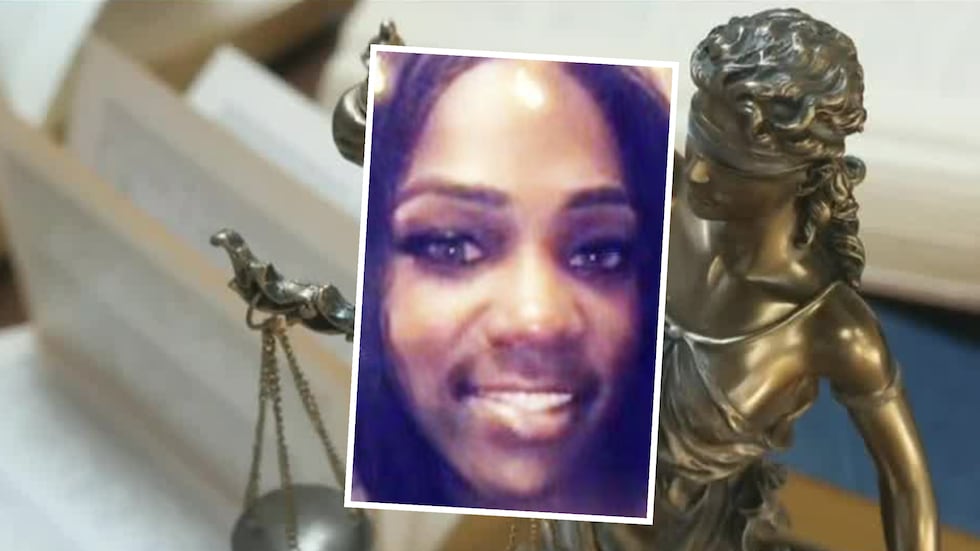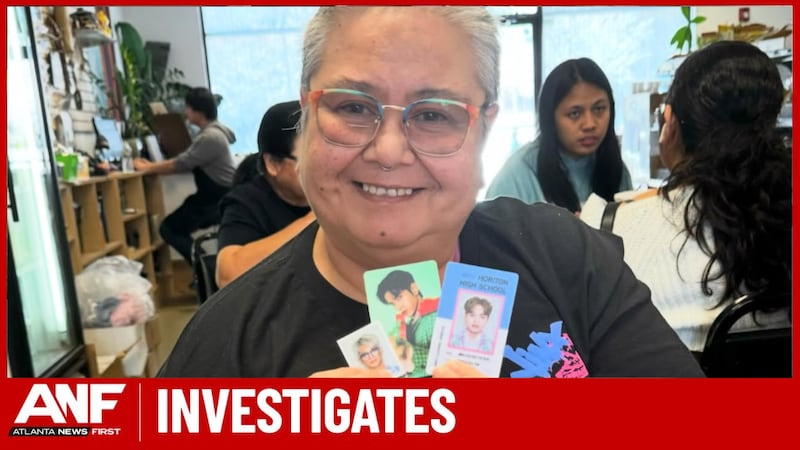Hate-crime jury hears about day of Allendale trans murder
COLUMBIA, S.C. (WRDW/WAGT) - The first federal trial over a hate crime based on gender identity continued Wednesday – a trial over the Allendale murder of Dime Doe, a Black transgender woman.
The U.S. Department of Justice alleges that in August 2019, Daqua Lameek Ritter coaxed Doe into driving to a sparsely populated rural county in South Carolina and killed her after word of their secret sexual relationship started getting out.
The indictment alleges the motive was Doe’s actual and perceived gender identity.
On the third day of the trial Thursday jurors heard from witness Kiera Mallory, who was the girlfriend of Kalvin Peebles, Ritter’s cousin.
Mallory says on the date of Dime’s murder, she and Peebles were at his home on Concord Church Road. She said Ritter came to house, looking for Peebles.
Mallory said Peebles and Ritter talked outside. She stated Peebles came back into the house and stated he needed to give Ritter a ride to the “store uptown”. She said at this time, Peebles and Ritter were acting strange and in a rush.
After Peebles and Ritter leave, Mallory says she left the house and drove down Concord Church Road, where she sees the crime scene. She stated she called Peebles about the crime scene.
Mallory said Kalvin told her: “He heard that Daqua killed Dime Doe.”
When questioned by the defense, Mallory was given a transcript from her Feb. 2022 testify with the grand jury. On this day, when asked if Ritter had something to do with the murder, she said no.
Also on Thursday, jurors heard from witness Xavier Pinckney, who was also charged in the case and pleaded guilty to obstructing an investigation back in October.
He called Ritter a friend and said the week before Dime died, Ritter was upset and said he “didn’t want people to go around” saying he was sleeping with Dime. Pinckney said Ritter then added that he was going to “fight Dime” and threatened to beat her up.
He said on the day Doe died, Ritter asked to use his phone and had a gun in his pants.
He said he later saw Ritter in different clothes but carrying the ones he’d worn earlier. He asked for gasoline and a lighter, saying he wanted to set the clothes on fire, according to Pinckney. Later, Ritter and Devontre “Man-Man” Priester asked Pinckney to hide a gun, he said, but he didn’t because he felt like Ritter had killed someone.
Xavier itted texting Ritter to “stay away from Allendale” a week after the murder and telling Ritter “everyone was calling his name.”
When asked why he kept texting with Ritter, Xavier said: “I didn’t want anyone to go to jail.”
On cross-examination, the defense asked how many times he had lied in the case and why a liar should be trusted.
“Everyone should be given chances,” he said.
After he’d spoken about how much he smokes marijuana, the defense suggested he doesn’t too many details from the time of Doe’s murder because he was high.
When asked about Man-Man and Ritter asking him to hide the gun, he said: “I know I’m not the only one they asked to do this.”
Ritter’s cousin Jamie Priester, Man-Man’s mother, testified that on the day of Doe’s murder, she saw Ritter in the car with Man-Man, and they were talking about the murder.
Priester said Ritter was upset about a photo of Doe and Ritter on Doe’s phone. Priester said Ritter didn’t want the photo on social media.
In cross-examination, the defense said there was also a video of Doe and Ritter in bed together.
Priester said Ritter said he’d told Doe to meet him to talk about the video and photo. She testified that Ritter said when Doe looked down to delete the video, that’s when he shot her the first time.
During witness testimony Wednesday, the jury heard from suspect Daqua Ritter’s ex-girlfriend, Delasia Green.
Green and Ritter were in a relationship at the time of Doe’s murder. Green was arrested for not following a subpoena to testify/talk to government.
Green stated she went through Ritter’s phone, saying she had a “gut feeling” and wanted to go through his texting apps, Facebook and text messages. She stated she saw texts between Ritter and an unsaved number, later identified as Doe’s.
Green stated she questioned Ritter about Doe. She says he told her to “not question his sexuality,” saying he was upset about her confronting him about the text messages.
The jury also heard from multiple Allendale locals, including friends of Doe and Ritter.
Special agents with the FBI also testified and presented text messages between Doe and Ritter.
On Tuesday, the jury heard opening arguments and witnesses testified.

During opening arguments, Assistant U.S. Attorney Ben Garner portrayed Ritter as someone working vigilantly to avoid the ridicule he’d face if his secret relationship was exposed. They’d met during his teenage years when he traveled from his grandmother’s Brooklyn home to visit family property in Allendale.
The two had been close friends, according to the defense, and were related through Ritter’s aunt and the woman’s uncle.
But Ritter became “enraged” when he learned that one of Doe’s friends knew about their sexual relationship, according to Garner. Ritter threatened to beat her for sharing that information with anyone — something he had repeatedly instructed her not to do, Garner said.
The government has said that Ritter’s girlfriend learned about the affair between Ritter and Doe in the month before the killing. Prosecutors believe the revelation, which they say prompted Ritter’s girlfriend to hurl a homophobic slur, made Ritter “extremely upset.”
Garner cited text messages purporting to show that Ritter complained to Doe about the mockery less than one week before her death.
“He killed her to silence her,” Garner told the jury.
They say that Ritter lied about his whereabouts in an interview with state police later that day. A “nervous” Ritter walked to his uncle’s house about half a mile away from the crime scene and asked for a ride home, according to Garner. Prosecutors say that Ritter enlisted others to help burn his clothes, hide the weapon and mislead police about his location on the day of the murder.

The first government witness Tuesday was Allendale County Sheriff James Freeman, who was a captain with the Allendale County Sheriff’s Office at the time of the murder.
He was working a separate traffic stop when he got the call that there was a body slumped over in the seat of a vehicle. He said he drove 15 to 20 minutes to what he calls a wooded area with no residential or business building in sight.
There, he saw a white Chevrolet Impala backed into the woods with a female slumped in the seat.
He felt for a pulse, didn’t find one and called emergency medical crews.
He noticed a shoe outside the car that resembled one that was inside the car.
He asked the South Carolina Law Enforcement Division to take over the case and then went to Ritter’s grandmother’s house for interviews.
On cross-examination, the defense pulled out an incident report to show the call came in at 5:51 p.m.
The incident report states that the car was runnning in park.
Days after the murder, he said he got a tip to go to Myers Road in Allendale regarding burned clothes.
He went there and found a burn barrel where something had been burned but nothing was inside, according to Freeman.
The second witness was a SLED agent who described the scene.
Prosecutors showed about 30 photos and had him describe what they showed.
They included the car off Concord Church Road, Dime slumped over to the side, blood in the seat and blood in her curly hair.
There was a black high heel and a pair of black Converses on the enger floorboard.
Beside the high heel was a gun shell.
There was a show in the grass matching the black high heel on the enger-side floor.
On the driver side were two gun shells – one in the seat and one in the floor.
There was a red iPhone with a driver’s license in the clear case. The driver’s license bore the name Ernest Devontay Doe.
Deadly trend
In recent years, there has been a surge in attacks on the LGBTQ+ community, and Doe is one of several transgender and gender-fluid murder victims in the CSRA. Others include:
- The July 2022 murder of Keshia Geter at the Knights Inn hotel on Boy Scout Road in Augusta.
- The Augusta murder of 33-year-old Felycya Harris, whose body was found Oct. 3, 2020, at Meadowbrook Park.
- The March 12, 2020, murder of John Scott Devore, also known in the community as Scottlynn Devore.
For decades, transgender women of color have faced disproportionately high rates of violence and hate crimes, according to the Department of Homeland Security. In 2022, the number of gender identity-based hate crimes reported by the FBI increased by 37% compared to the previous year.
Until 2009, federal hate crime laws did not for offenses motivated by the victim’s sexual orientation or gender identity.
The first conviction involving a victim targeted for their gender identity came in 2017. A Mississippi man who pleaded guilty to killing a 17-year-old transgender woman received a 49-year prison sentence.
But Tuesday marks the first time that such a case has ever been brought to trial, according to Brook Andrews, the assistant U.S. attorney for the District of South Carolina. Never before has a federal jury decided whether to punish someone for a crime based on the victim’s gender identity.
WRDW’s Sydney Hood and The Associated Press contributed to this report.
Copyright 2024 WRDW/WAGT. All rights reserved.















